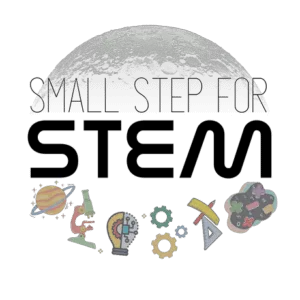Disclosure: this post contains affiliate links, which means I may receive a commission if you click a link and purchase something at no extra cost to you. Please check out our policies page for more details.
for more details.
Chemical reactions happen all around us, sometimes without even knowing it. From baking a loaf of bread in the kitchen to rust forming on a metal surface outside, chemical reactions are happening everywhere. This experiment is a stepping stone to open your child’s eyes to chemical reactions!
This hands-on activity helps children grasp the concept that mixing different substances can create entirely new ones with unique properties. As they see the balloon inflate, they learn about the interaction between an acid (vinegar) and a base (baking soda), resulting in the production of carbon dioxide gas.
So take a deep breath of oxygen and breathe out carbon dioxide (a chemical reaction!), because it’s time to start the experiment!

How to make the Fizz, Pop, Inflate Balloon science experiment
Supplies you will need
For this experiment, you will need the following:
- Balloon

- Vinegar
- Baking soda

- Soda bottle
- Funnel


Before you start
Since we’re dealing with a chemical reaction, please watch your child when doing this experiment. You could even use safety goggles if you have them on hand.
Instructions
Here is how to do this experiment with your child:
Step 1: Pour baking soda into balloon
Take your balloon and, if needed, use a funnel to pour about one or two tablespoons of baking soda into it.


Step 2: Add vinegar to soda bottle
Next, pour about half a cup of vinegar into the plastic bottle. I used a funnel again (made sure to clean out the baking soda first!) and poured it into the soda bottle.

Step 3: Stretch balloon neck over the soda bottle
Stretch the opening of the balloon over the neck of the plastic bottle, making sure it’s secure.
As long as the balloon stays off to the side of the bottle (like in my picture below), the reaction shouldn’t begin yet.

Step 4: Watch the balloon inflate!
Here comes the exciting part! Lift the balloon so that the baking soda falls from the balloon into the vinegar in the bottle. It happens quickly, so be prepared!
As soon as the baking soda mixes with the vinegar, you’ll see a bubbling reaction occur. This is because the vinegar (an acid) and baking soda (a base) react together to produce carbon dioxide gas. The gas fills up the balloon, causing it to inflate.

The science behind the Fizz, Pop, Inflate Balloon experiment
This experiment teaches:
- Chemical reactions
- Measurement skills
- Critical thinking
How it works
In the Fizz, Pop, Inflate experiment, we are mixing a base (baking soda) and an acid (vinegar) to create a chemical reaction.
The balloon is holding the baking soda and the plastic bottle holds the vinegar. When we place the balloon on the neck of the bottle and allow the baking soda to fall into the bottle, the chemical reaction between the acid and base begins.
When baking soda and vinegar mix, it creates carbon dioxide, which is what causes our balloon to inflate.
Chemical reactions
This experiment demonstrates a basic chemical reaction between an acid (vinegar) and a base (baking soda) to produce carbon dioxide gas. It helps kids understand that mixing different substances can lead to entirely new substances with different properties.
Measurement skills
By measuring and pouring specific amounts of baking soda and vinegar, kids can practice basic measurement skills, such as using tablespoons and cups.
Here’s another measuring activity that dives into the very basics of measuring.
Critical thinking
As we watch the balloon inflate, we can think critically about why it’s happening.
Prompt your child with questions like, “What do you think is causing the balloon to get bigger?” and “Why does this happen when baking soda and vinegar mix?”.
More chemical reaction experiments to try out with your child
- Fizzing Lemons: What happens when you mix baking soda and lemons?
- Race a Chemical Reaction Car!
- Make a Homemade Lava Lamp to Explore Chemistry
Related experiments
The Rev Up engineering experiment is so great because it combines engineering with science while keeping your child engaged in the excitement! This experiment involves science and engineering by...
Did you have a lava lamp growing up? As it turns out, it is easy and inexpensive to create your own lava lamp while learning a thing or two about chemistry. Creating your own lava lamp is a great...
